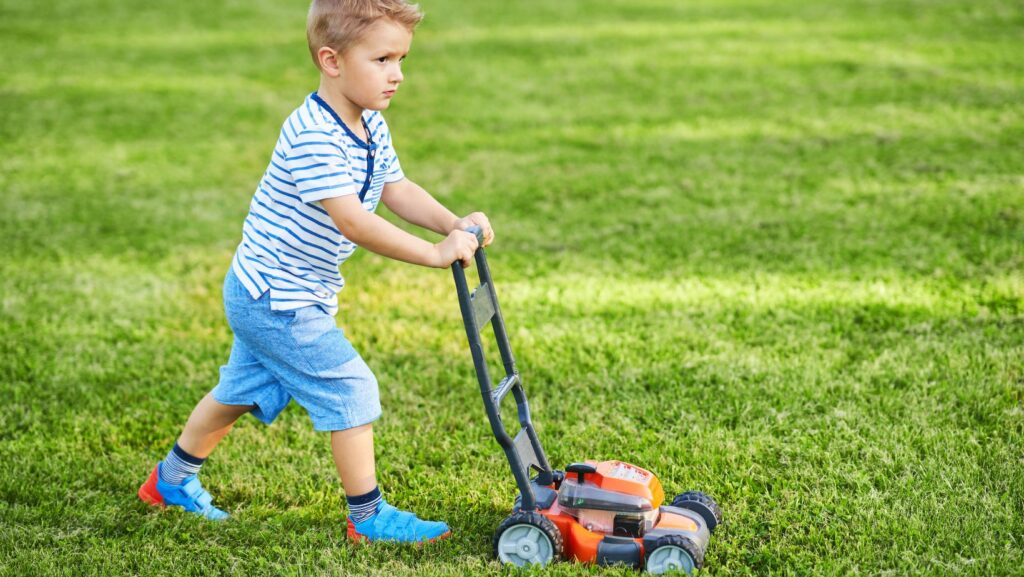Help your newly adult children get their yard in order with their first home. It can be bonding, educational, and sharing skills as it beautifies and functions better in their new space. Here’s how parents can help kids transform their first yard into an inviting, fun outdoor area:
1. Assess the Space Together
Begin by accessing your yard’s condition. Take a walk through the space with the kids and look at its size, shape, and what features exist. Have them describe their vision and list priorities they would want to be placed in the yard. Do they want to have a garden, a play area for kids, or a yard to have friends over? Knowing their intentions will set a course of action.
2. Create a Plan
Once you have a clear idea of what they want, help them come up with a realistic plan. This plan should contain:
• A Layout: Rough out the yard; mark where the garden beds, seating areas, and pathways will be.
• A Layout: How much they can and are willing to spend. This is going to determine the materials and plants you pick for the project.
• A Timeline: Provide realistic timelines for the different stages of the project, keeping in mind their work schedule and seasonal considerations.
3. Start with the Basics
Create a firm base by getting the basics in order. This will include the following:
• Clearing and Cleaning: Remove all waste, weeds, or other unsightly structures. Clean the space to give you a clean slate.
• Soil Preparation: Check the soil and add amendments as needed. If it is not humus-rich, one can add compost or other organic material to enable soil health, which forms the foundation for a great garden. Or, opt for artificial grass, which provides a lush, green, virtually maintenance-free lawn all year long.
• Lawn Care: If there is a lawn, provide guidance on the easy part of having a lush lawn. Information about proper mowing, watering, and fertilizing will be provided. Fill bare areas with over-seed or plant a new lawn.
4. Choose Plants Wisely
The success of a yard largely depends on the choice of plants.
With that being said, consider the following factors when determining which plants are suitable:
• Climate and Soil: Select plants that are adapted to your local climate and the type of soil in your area.
• Growing Resilience: If it is the first time your children become involved with this hobby, suggest more resilient and very easy-to-maintain plants. Perennials, native plants, and drought-tolerant species work great.
• Seasonal Interest: Demonstrate a mix of interest throughout the year with spring bulbs, summer perennials, or fall foliage.
5. Create Functional Spaces
Help them design spaces that cater to their specific desires. Typically, the most desired types of spaces include:
• An Entertaining Space: In case they like holding events, provision for a patio or deck space should be made and provided. This is possible through the allocation of an area for the entertainment space, complete with seats, dining, maybe a fire pit, or even a grill.
• Garden beds: Help in setting up beds for flowers, vegetables, or herbs. One can have elevated beds to make management easier.
• Pathways: Build a pathway to gain access from one area of the yard to the other. The pathway will be constructed with gorgeous and sturdy materials like gravel, stepping stones, or pavers.
6. Add Personal Touches
Help your kids incorporate and add elements of personal identity into their yard with items that express something about them.
Oftentimes, this is done using:
• Outdoor Decor: Let your children take responsibility for choosing outdoor decoration, be it garden art, wind chimes, or even some decorative planters.
• Lighting: Add outdoor lighting to increase the amount of safety and ambiance. Solar lights, string lights, and lanterns bring warm appeal.
• Furniture: Assist with the selection of outdoor furniture that is comfortable, durable, and a bold reflection of the child’s personality.
7. Teach Maintenance Skills
Teach them how to take care of their new yard by demonstrating the most common lawn care practices, such as:
• Watering Techniques: How and when to water various plant types to ensure proper growth and extend the longevity of the plant’s life.
• Pruning/Trimming: How to prune trees and shrubs correctly so that they grow in a neat and organized fashion.
• Pest Control: Share both organic and chemical methods to handle common garden pests.
8. Encourage Patience and Enjoyment
Let the children know that beauty in a yard takes time. Let them enjoy the journey, and celebrate the small victories with them, letting them know that in itself, gardening and yard work can be therapeutic and rewarding—in seeing the sense of accomplishment, that is, one’s space develop.
Conclusion
Help your newly adult kids landscape their house as a meaningful way to help them settle into their first home. This will include an assessment of the space, providing a plan, starting off with basics, choosing plants wisely, creating functional spaces, adding personal touches, teaching maintenance skills, and being patient to guide your young adults through the process of creating a beautiful, enjoyable outdoor haven by turning the yard into a beautiful landscape. This coordination, no doubt, is going to enhance their living environment and strengthen your bonding while working together for a common cause.




More Stories
A Beginner’s Guide to Growing Houseplants
Comprehensive Dental Care for a Healthy, Confident Smile
The Hidden Benefits of Upgrading Your Windows: Beyond Energy Efficiency